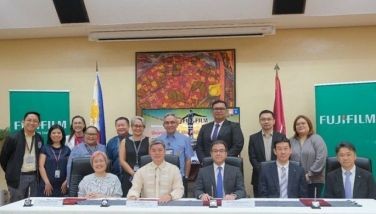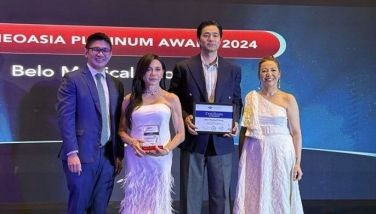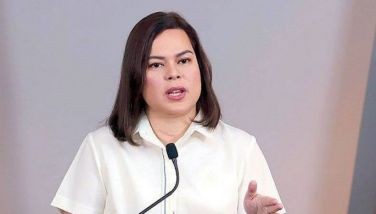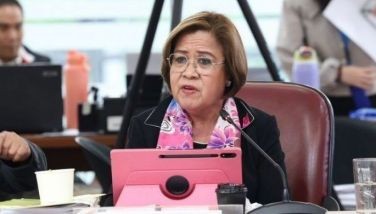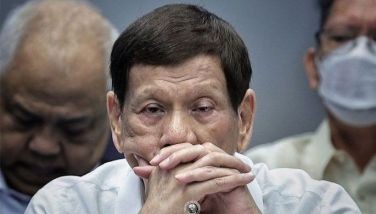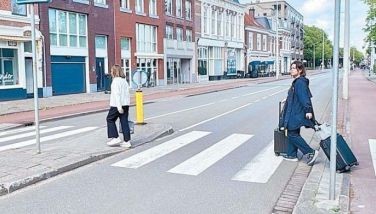RP's gateway to the world

While the global financial crisis may continue to hover economies of the world, it seems to be sparing so far the Philippines. In fact, we keep hearing about major new investments coming in to the country. For one, I was told, one of the richest man in the Middle East is set to pour in as much as $1.2 billion in a project to expand the existing Diosdado Macapagal International Airport (DMIA) at Clark Field in Angeles City, Pampanga.
This was disclosed to us by Nestor Mangio, chairman of the board of Clark International Airport Corp. who was the main guest during our regular Tuesday Club breakfast meeting at the EDSA Shangri-La in Mandaluyong City. Mangio excitedly told us about the investment to be made by the Pacifica Avia Group Inc. al Mal Investment of the Al Kharafi Group of Kuwait.
The proposed investment is being considered under a Build-Operate-Transfer (BOT) agreement following a failed bidding of this project in September last year. After a “due diligence” conducted by the CIAC, he said, the original winning bidder was disqualified when it failed to satisfy the requirements of the project.
As mandated by the BOT law, Mangio cited, the P3-billion project is currently undergoing the so-called “Swiss challenge” system of competitive bidding. This system is where the claims, veracity and global competitiveness of the unsolicited proposals could be put to open test by inviting competitive proposals from other market players. So far though, Mangio noted, the Pacifica Avia offer appears unchallenged.
The Pacifica Avia is owned by the group of Al Kharafi, who is in the list of billionaires around the world. He is engaged in the airport construction business. His construction firm built the Egypt airport city. It has also put up the Dubai airport terminal that has a 120-million-passenger-a-year capacity. It is currently undertaking the construction of an airport over a wide desert in Hah-il in Saudi Arabia.
In fact, Mangio informed us, another Kuwaiti firm, the K Gulf Logistics has already put up cargo sorting and forwarding at the CIAC complex, after having signed in December last year a $1 billion BOT deal, also over 25 years.
The DMIA is an aviation complex inside the former American military facility known as Clark Air Base. This has been turned into and developed as Clark Freeport Zone. The DMIA is located inside a 2,367-hectare area within the Clark Freeport Zone. Currently as it is, Mangio noted with satisfaction that there are a lot of air traffic at DMIA due to the popular “budget fares” offered by airlines operating its domestic and international flights there like the Cebu Pacific, Tiger Airways, Air Asia, Aseana, Seair and Spirit of Manila.
From the brochures handed out to me by Mangio, it states that full implementation of the master development plan “will transform the DMIA complex into an airport city with an ultimate design of 60 to 80 million passengers per year and a third runway which will allow simultaneous landing and take-off.”
Once this project with Al Kharafi goes on stream, the DMIA stands to become the country’s newest and biggest international gateway. This would definitely be a bigger and more modern gateway than the three existing airport complexes in Metro Manila — the Ninoy Aquino International Airport (NAIA), the Centennial Airport and the NAIA Terminal-3.
The huge investment is enough incentive for President Arroyo to go to Kuwait for a reciprocal state visit sometime in April. It will precede her scheduled state visit to Brazil later in June as officially announced yesterday by the Department of Foreign Affairs.
The President was supposed to proceed to Kuwait Sunday from Chang-mai in Thailand after attending there the just concluded Leaders’ summit of the Association of South East Asian Nations (ASEAN). But due to lack of preparations from the side of the host government, as I gathered, it was postponed for next month.
The forthcoming trip of Mrs. Arroyo is a return gesture to the state visit made in the Philippines in August last year by Kuwaiti Prime Minister Sheik Nasser al Mohammad al Ahmad al Sabah. It was during the state visit here in Manila where the Air Agreement between the two nations was signed. When President Arroyo goes to Kuwait, she would bring to the Prime Minister the formal documents to ceremonially signal the effectivity of this bilateral air pact.
I have once visited this tiny oil-rich emirate when I covered the state visit there of former President Fidel V. Ramos. We personally witnessed the very close ties that our country enjoys with Kuwait. The Kuwaiti people acknowledged the help of the overseas Filipino workers (OFWs) during the reconstruction period of their war-torn nation after they were invaded by Iraq.
The Kuwait investment to expand and further develop DMIA also stirred excitement for the Federation of Tourism Industries in the Philippines (FTIP), headed by its president, lawyer Alejandra “Dading” Clemente, founder of Rajah Tours. She led the stakeout of industry players at the Senate Wednesday night to push the approval of the long delayed passage into law of the Tourism Code. It was one of the “priority” economic bills of the President that the Senate approved during their marathon session that night when they took up the P11.3-billion poll automation budget.
Behind these two vital legislations is Sen. Richard Gordon who championed the cause of the local tour and travel industry in pushing for the enactment of the Tourism Code of the Philippines. Gordon, who is the erstwhile Department of Tourism (DOT) Secretary of President Arroyo, labored for more than four years into finally getting this Tourism Code approved in Congress. His counterpart in Congress behind this endeavor is Rep. Edgar Chatto, chairman of the House Committee on Tourism.
Given the multiplier effect of the tourism industry to the economy, the FTIP is imploring President Arroyo to sign the Tourism Code into law as soon as possible. The FTIP strongly counts on the Tourism Code, once embedded into law, as one of the best safeguards against the severe impact of the global financial crisis on the Philippine economy.
For a globe-trotting leader, President Arroyo would not drag her foot in making the Tourism Code of 2009 as one of her landmark legacies.
- Latest
- Trending










